
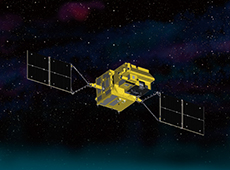
Global Change Observation Mission 1st-Climate (GCOM-C1)
Q. If you compare the current status of your mission to mountaineering,
Q. People, time, things: which of these would you like more of? Place in order of preference.
People, time, things
Q. What aspect of your mission do you want people to take note of? What is the selling point of your mission?
GCOM-C1 observes clouds, aerosols (dust in the atmosphere), ocean color, vegetation, and snow and ice. By conducting a long-term survey of the status of the entire globe (the atmosphere, oceans and land), we aim to contribute to climate change predictions, and to provide useful information for society, including data on fishery.
Q. What is your priority in management?
To make the right technical judgment in consideration of time constraints.
Q. What is your favorite genre of books? Do you have a favorite book?
War stories (particularly early modern era)
Q. What is your motto, or favorite saying?
Harmony
Q. Do you have a message for visitors to this website?
We thank you all for your support for the launch of SHIZUKU (GCOM-W1) in 2012. In parallel to the operation of SHIZUKU, we are fully dedicated to the development of the GCOM-C1. We appreciate your continued support.
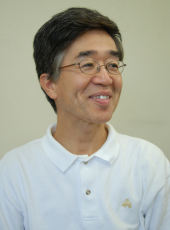
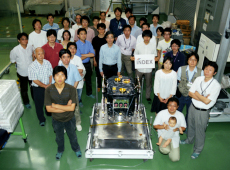
REIMEI project team
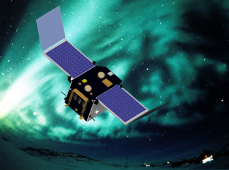
Q. If you compare the current status of your mission to mountaineering,
Abundant results have been achieved
A path of cherry blossoms
Q. People, time, things: which of these would you like more of? Place in order of preference.
Time, people, things
Q. What aspect of your mission do you want people to take note of? What is the selling point of your mission?
The more you use your brain, the more sophisticated a small satellite can be.
Q. What is your priority in management?
To be not a manager but a player.
Q. What is your favorite genre of books? Do you have a favorite book?
Fiction
Q. What is your motto, or favorite saying?
Nothing in particular
Q. Do you have a message for visitors to this website?
Don’t think about fame or success. Let’s embrace the value and happiness of doing your best for what you love.
Related link: Innovative-technology Demonstration Experiment REIMEI (INDEX)
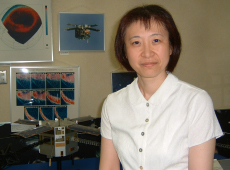
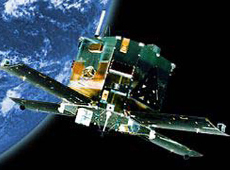
Q. If you compare the current status of your mission to mountaineering,
We are exploring the top
We have an open view
Q. People, time, things: which of these would you like more of? Place in order of preference.
Time, people, things
Q. What aspect of your mission do you want people to take note of? What is the selling point of your mission?
The fact that we have been accumulating data for 24 years
Q. What is your priority in management?
I try to improve efficiency to minimize manpower and time consumption.
Q. What is your favorite genre of books? Do you have a favorite book?
The book that left me with the strongest impression among the ones I have read in the last few years is Shizumanu Taiyo by Toyoko Yamasaki.
Q. What is your motto, or favorite saying?
Art is long, life is short.
Q. Do you have a message for visitors to this website?
Through the media, you hear only about the final results of a project. However, for us, who are implementing the project, the process is as important as the results themselves. Each project gives you different pleasures, challenges and surprises, and it is not always easy to talk about these with simple metaphors. About the twists and turns we have experienced over the course of the project? I would like to leave it to your imagination – compare our work to your own personal experiences of accomplishment.
Related link: Aurora Observation Satellite AKEBONO (EXOS-D)
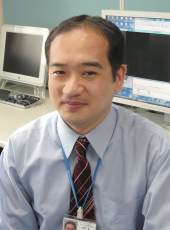
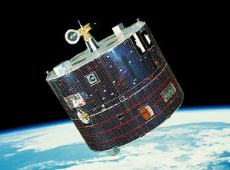
Q. If you compare the current status of your mission to mountaineering,
On our way down the mountain
Q. People, time, things: which of these would you like more of? Place in order of preference.
People, time, things
Q. What aspect of your mission do you want people to take note of? What is the selling point of your mission?
Since its launch in 1992, GEOTAIL has spent over 20 years observing plasma phenomena in near-Earth space. Although the plasma phenomena in outer space greatly depend on solar activity, which has about an 11-year cycle, there is not much continuous observation data on two solar cycles. We believe that GEOTAIL will provide valuable basic data to allow us to study how changes in solar activity affect the Earth.
Q. What is your priority in management?
To encourage scientists around the world to use the data our project is obtaining.
Q. What is your favorite genre of books? Do you have a favorite book?
History and social science
Q. What is your motto, or favorite saying?
Nothing in particular
Q. Do you have a message for visitors to this website?
In the 50-year history of Japanese space development, it would be impossible to continue scientific observation for over 20 years without great efforts from the scientists on this mission and many others. We would be delighted if website visitors could learn about the fact that Japan has been operating such a long-term mission and making world-class scientific discoveries, and become our supporters.
Related link: Magnetospheric Observation Satellite (GEOTAIL)
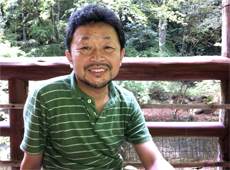
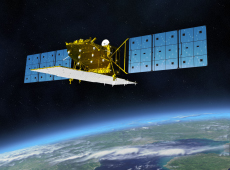
Q. If you compare the current status of your mission to mountaineering,
Around the 8th station
Ups and downs
Sunny, sometimes cloudy
Q. People, time, things: which of these would you like more of? Place in order of preference.
Time, people, things
Q. What aspect of your mission do you want people to take note of? What is the selling point of your mission?
Our satellite’s best selling point is the ability to carry out observation in any conditions, sunny or rainy, day or night.
Q. What is your priority in management?
Motivation of the team members
Q. What is your favorite genre of books? Do you have a favorite book?
Nonfiction (because truth is stranger than fiction).
Q. What is your motto, or favorite saying?
“Do not hurry. Do not rest.” (Because I have a tendency to jump to conclusions.)
Q. Do you have a message for visitors to this website?
There are a lot of things we can do just with ALOS-2’s radar, but by combining it with a satellite equipped with a digital camera, we will advance the utilization of space even further. Please keep up your support!
Related link: Advanced Land Observing Satellite-2 DAICHI-2 (ALOS-2)
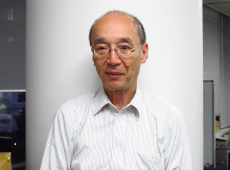
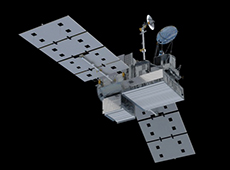
Q. If you compare the current status of your mission to mountaineering,
Q. People, time, things: which of these would you like more of? Place in order of preference.
Time, people, things
Q. What aspect of your mission do you want people to take note of? What is the selling point of your mission?
Using the unique cutting-edge technology known as Dual-frequency Precipitation Radar, we will monitor precipitation on a global scale with high accuracy; contribute to solving the Earth’s environmental problems; and improve the accuracy of weather forecasting, and typhoon and flood predictions.
Q. What is your priority in management?
To make sure that nothing is overlooked, especially when I am in a hurry.
Q. What is your favorite genre of books? Do you have a favorite book?
These days I enjoy reading historical novels, although I was never interested in them when I was young.
Q. What is your motto, or favorite saying?
Do your best and leave the rest to God.
There is not much we can do once a satellite is launched. Therefore, I would like to do everything I can when the satellite is on the ground, and wait for launch in peace.
Q. Do you have a message for visitors to this website?
You may think at first that this is a low-key mission and that its significance is hard to see. But information on precipitation is very useful. By monitoring precipitation, this project can benefit our daily lives. This is also a very international project, implemented in partnership with the United States and other nations.
Related link: Global Precipitation Measurement / Dual-frequency Precipitation Radar (GPM/DPR)


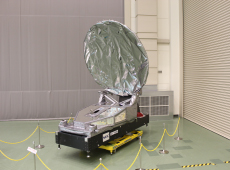
Engineering model of the Cloud Profiling Radar, which is under development at JAXA.
Q. If you compare the current status of your mission to mountaineering,
Q. People, time, things: which of these would you like more of? Place in order of preference.
Being greedy, I want all of them. But I would say time is particularly precious, as we are getting closer to launch every day.
Q. What aspect of your mission do you want people to take note of? What is the selling point of your mission?
It is the world’s first and only satellite with Doppler radar using a high frequency of 95 GHz.With this radar and Europe’s sensor, which is currently under development, we will observe in three dimensions the distribution of clouds and aerosols on a global scale, and the radiation balance in the upper atmosphere. This is expected to greatly improve the accuracy of numeric models of climate/weather.
Q. What is your priority in management?
To smoothly carry out joint development with Europe, where people have different cultures and customs, it is very important to avoid misunderstandings, and to deepen our mutual understanding. For this reason, I would like to enhance “transparency” among us. I also think this is an important effort in terms of early assessment of risks.
Q. What is your favorite genre of books? Do you have a favorite book?
I often read historical novels.
Q. What is your motto, or favorite saying?
“There is no path before me. There is only a path behind me.”
Q. Do you have a message for visitors to this website?
With the EarthCARE project, we are attempting world’s-first observation using cutting-edge science and technology.
The objectives are to accurately evaluate the impact of human social activity on the Earth’s environment based on obtained observation data, and to use this satellite data for various aspects of our daily lives, from weather forecasting to assessing the impact of global warming.
With the aim of passing on our beautiful Earth and affluent society to the next generation, this project started as the first joint Earth observation project with the European Space Agency. By collaborating with many more countries in the future, we would like to ensure the success of the project so this can become a foundation for finding solutions to global issues.
Your support is greatly appreciated.
Related link: Earth Clouds, Aerosols and Radiation Explorer (EarthCARE)


















